Heavy rain slammed South Florida Wednesday, flooding cars and buildings including Fort Lauderdale-Hollywood International Airport, which reopened Friday morning but with extensive delays.
The big picture: Broward County Public Schools said the sixth-largest district in the U.S. would be closed Thursday and Friday as roads were inundated with floodwaters after over two feet of rainfall fell in some areas over Wednesday night.
- The National Weather Service warned Wednesday evening in a rare "flash flood emergency" that was later lifted for areas near Hollywood, Dania Beach and Fort Lauderdale: "This is a life-threatening situation."
- Brightline announced Wednesday evening it had suspended its train service between Miami and Fort Lauderdale and authorities urged people to stay off the roads. Operations resumed early Thursday.
By the numbers: The NWS office in Miami tweeted Thursday that preliminary data showed a potentially historic 25.91 inches of rain fell in 24 hours in Fort Lauderdale.
- This likely qualifies as a 1-in-1,000-year rainfall event for that location, and amounts to about one-third of the city's annual precipitation total falling in one day.
- To put this another way, a 1,000-year event means there is a 0.1% chance of it occurring in any individual year.
- Dania Beach was slammed with 17.30 inches of rain in 24 hours and Hollywood received 18.16 inches, according to the NWS preliminary data.
- Hollywood Mayor Josh Levy told CNN Wednesday the city had "recorded over 12 inches of rain since midnight, and that’s on top of consecutive days of seemingly nonstop rain."
- According to the NWS, the 24-hour preliminary rainfall total at Fort Lauderdale was 25.6 inches, which agency meteorologist Victor Murphy noted would be an all-time state record for the most 24-hour rainfall.
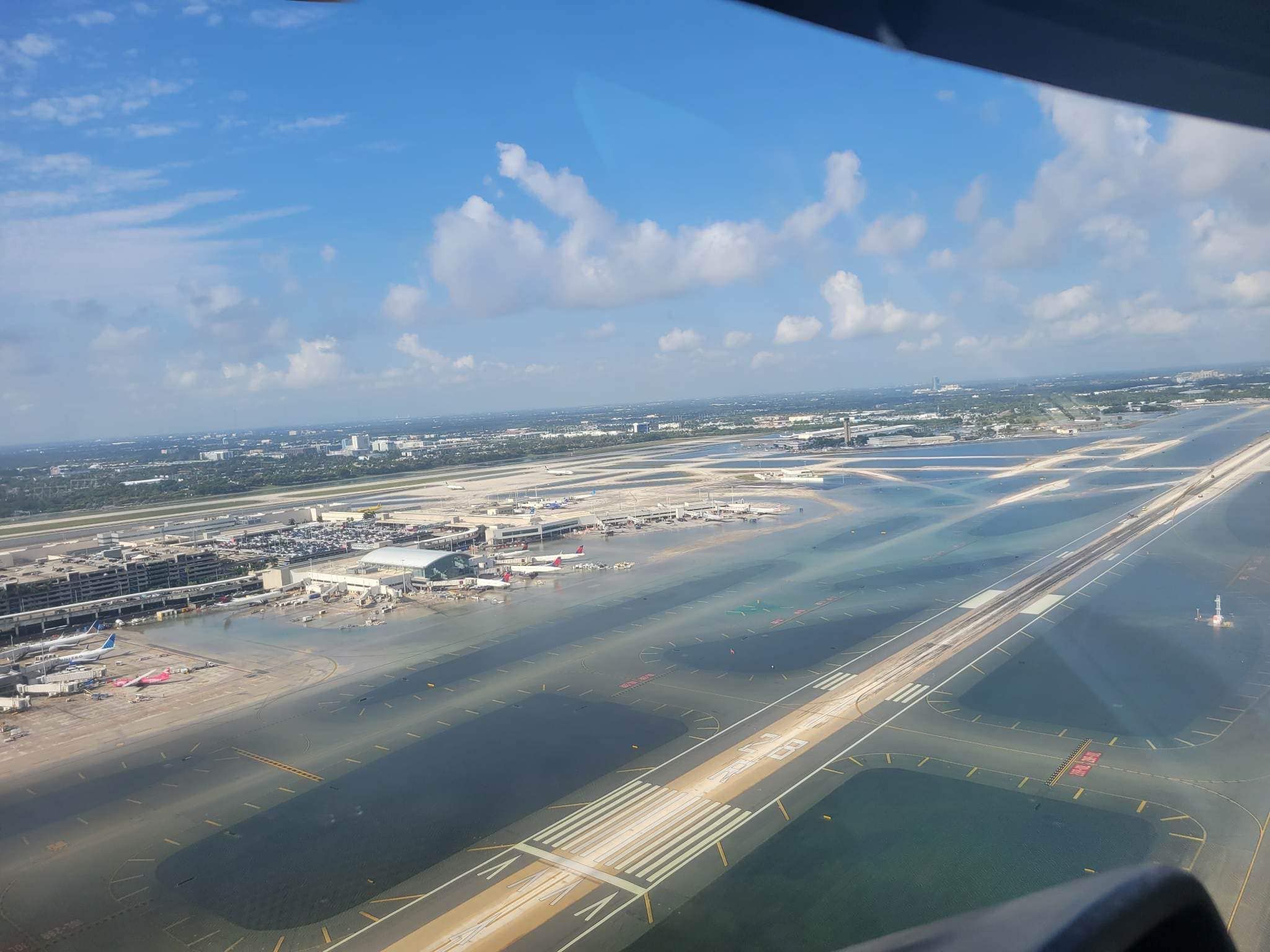
Thought bubble: Such an extreme rainfall event over a localized, highly populated area is a recipe for major economic losses and potentially some loss of life.
Between the lines: Many factors are contributing to this event during Florida's dry season, including the broad area of low pressure over the Gulf and a stalled-out frontal system.
- Studies have shown that extreme precipitation events are becoming more common and more severe throughout the U.S. and around the world.
- For every 1°C (1.8°F) increase in temperatures, the atmosphere can hold 7% more moisture, which helps fuel storms, as do warming ocean temperatures.
- Planners that designed infrastructure to withstand a 100-year flood 20 years ago are now facing the reality that such floods are occurring more frequently as the climate warms and the amount of moisture available to storms increases.
The intrigue: Fort Lauderdale joins the growing list of places hit with damaging deluges throughout the past two years. This includes St. Louis, Missouri, Dallas, Texas, and Hazard, Kentucky.
Of note: A flash flood warning was in effect for Fort Lauderdale, Pembroke Pines and Hollywood through 9:30pm Thursday due to more heavy rain.
- Aerial video on Thursday morning showed floodwaters on taxiways and runways at the airport.
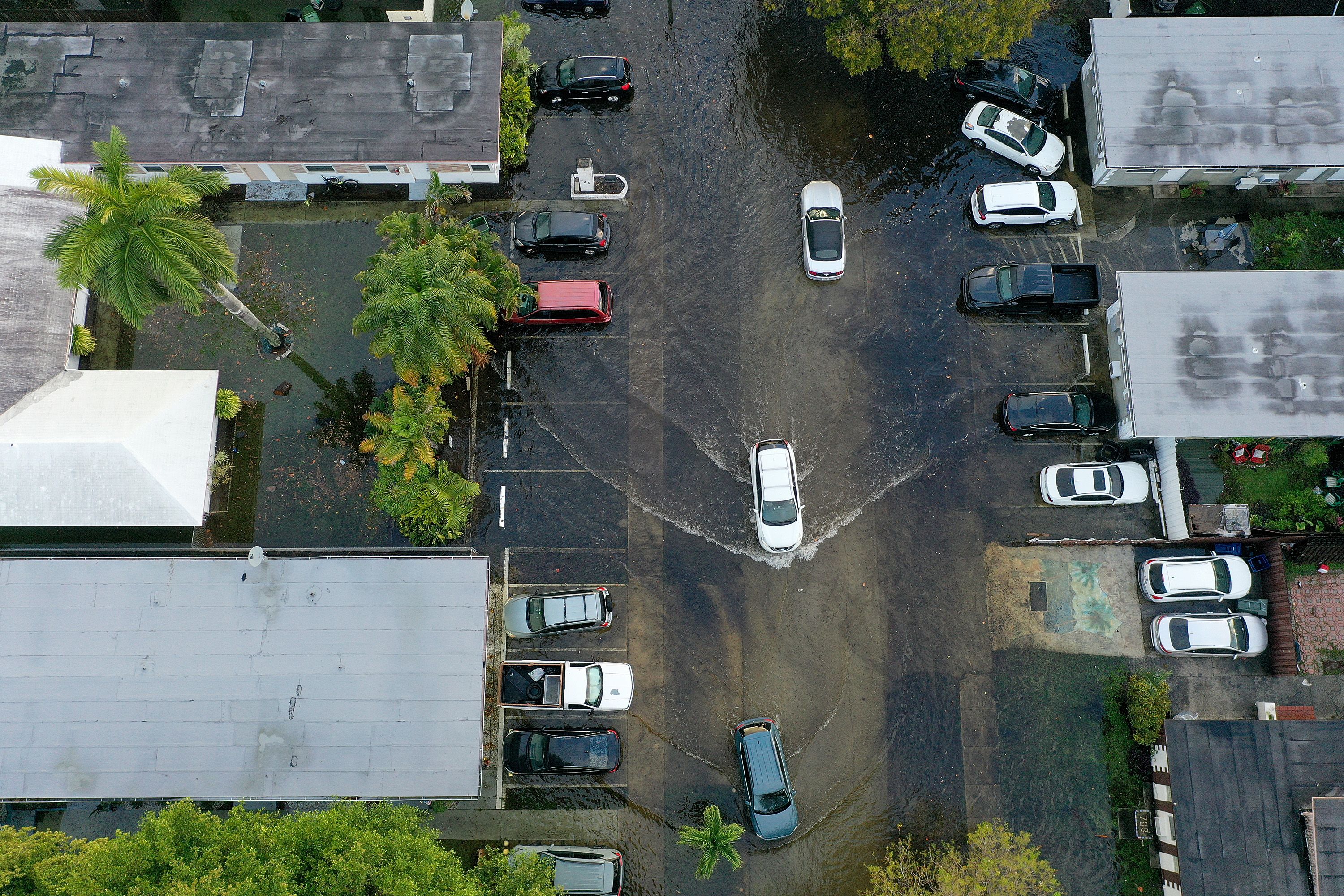
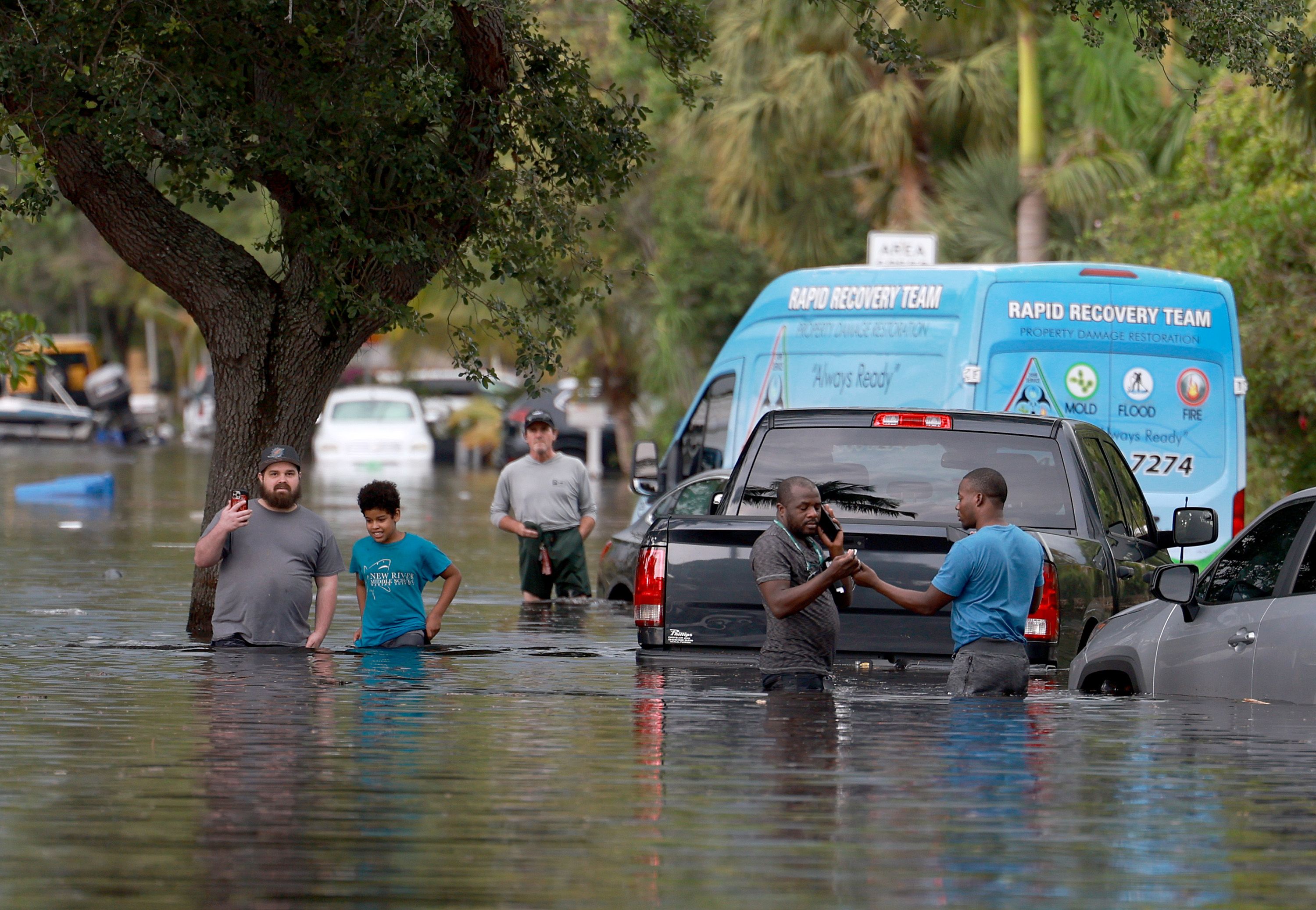
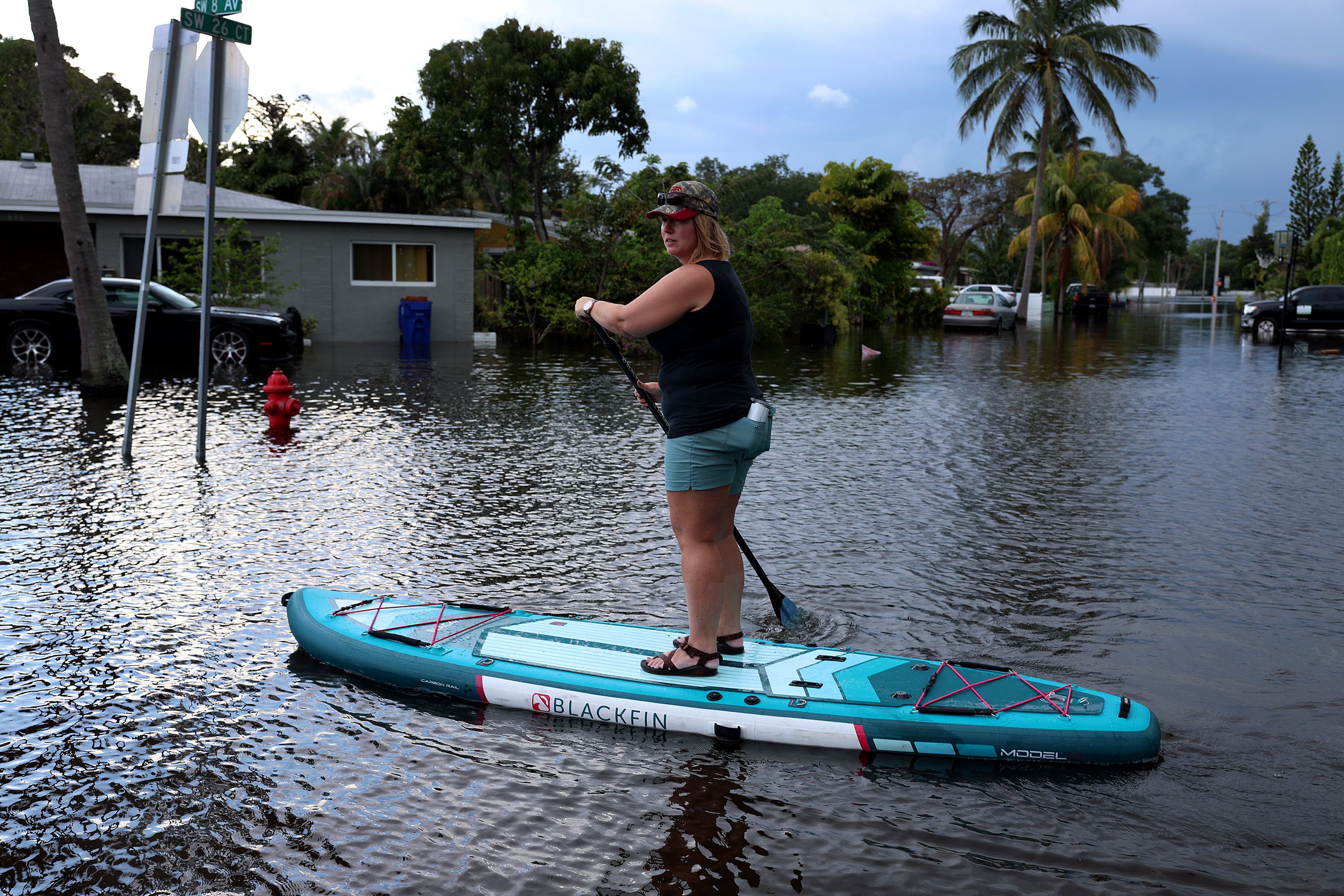
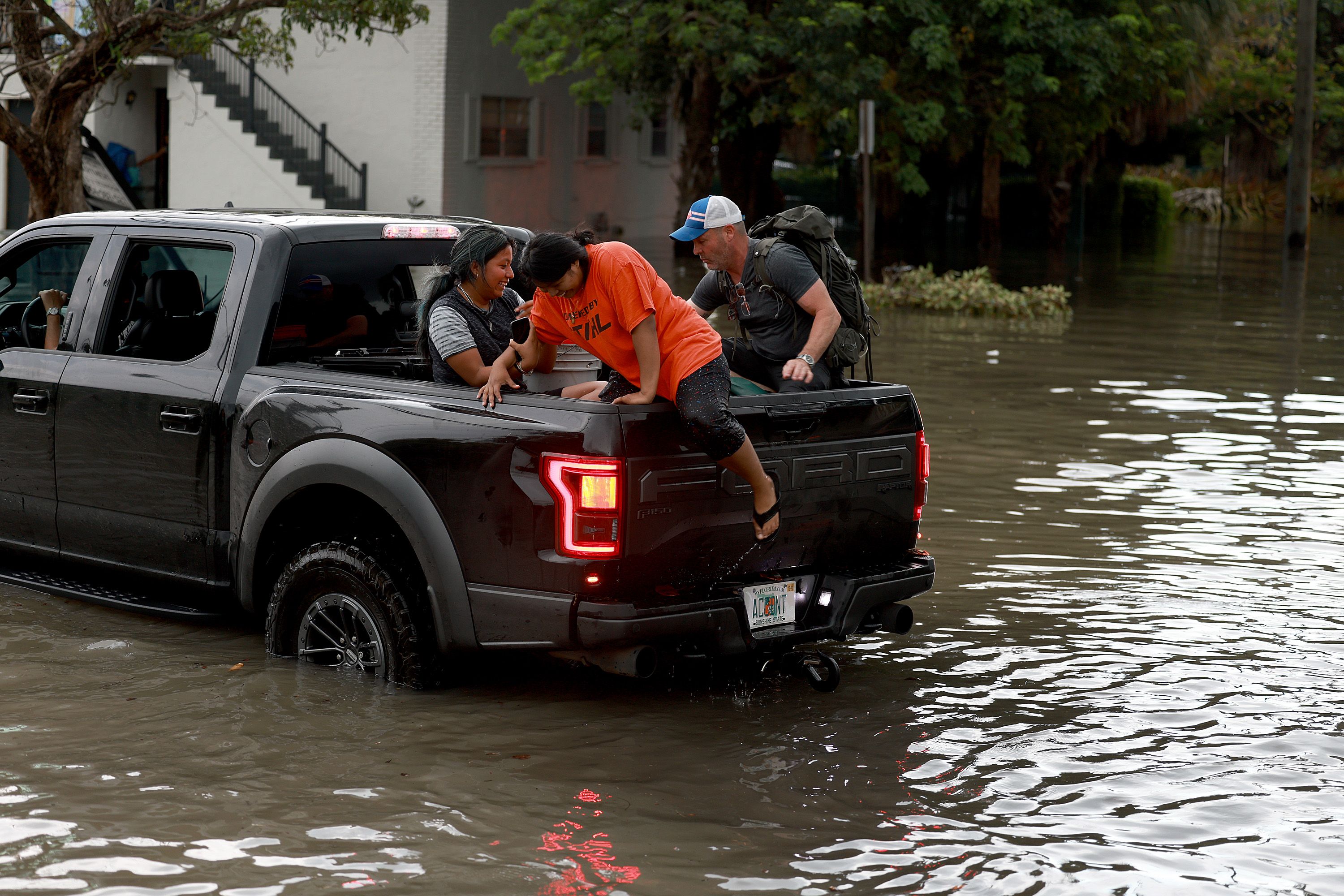
Go deeper:
We haven't built for this climate
St. Louis hit with "catastrophic" rainfall, flash flooding prompts rescues
The era of real-time climate change attribution is here
Editor's note: This article has been updated with additional details throughout.







